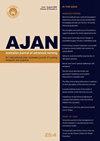The effects of a hospital-based perinatal breastfeeding program on exclusive breastfeeding in Taiwan: a quasi-experimental study
IF 1.3
4区 医学
Q3 NURSING
引用次数: 3
Abstract
Objective: To examine if a perinatal breastfeeding program would improve the exclusive breastfeeding rate at a baby-friendly hospital. Background: The Ten Steps to Successful Breastfeeding and Baby-Friendly Hospital Initiative have been widely used to improve breastfeeding outcomes worldwide. A hospital-based multi-strategy intervention may provide an opportunity to increase breastfeeding in different countries. Study design and methods: The study used a quasi-experimental design. Data was collected in a Baby Friendly hospital. A total of 60 mother-infant dyads were included. The experimental group took part in the multi-component perinatal breastfeeding program, while the control group received routine care. The multi-strategy program included prenatal breastfeeding education, birth kangaroo mother care (skin-to-skin contact and non-separation practices) at first breastfeed, continuous 24-hour rooming-in, ongoing kangaroo mother care with breastfeeding on cue, and hospital support visits. The exclusive breastfeeding rate was measured at hospital discharge, and one-month postpartum. Results: The mothers who participated in the intervention had a greater exclusive breastfeeding rate at hospital discharge and one month postpartum than those in the control group. In the experimental group, 90% of the infants completed the first feeding within two hours after birth. At discharge, 93.3% of the mothers in the experimental group and 53.3% in the control group were exclusively breastfeeding. At one month postpartum, 83.3% of the mothers in the experimental group and 36.7% in the control group were still exclusively breastfeeding. Discussion: The intervention program used in the current study is different to previous studies. The current intervention not only included prenatal education and postpartum support, but also included birth kangaroo mother care at first breastfeed and ongoing kangaroo mother care with breastfeeding on cue. Breastfeeding should be promoted through perinatal comprehensive clinical and social support starting in the prenatal period and continuing through intrapartal, postpartum, and follow-up periods. Conclusion: This study was the first study to use a hospital-based multi-strategy intervention including the non-separation of mother-infant dyads and other breastfeeding support for mothers in Taiwan. The program was associated with a significant improvement in the exclusive breastfeeding rate at one month postpartum.以医院为基础的围产期母乳喂养计划对台湾地区纯母乳喂养的影响:一项准实验研究
目的:研究围产期母乳喂养计划是否能提高爱婴医院的纯母乳喂养率。背景:成功母乳喂养的十个步骤和爱婴医院倡议已被广泛用于改善世界各地的母乳喂养结果。基于医院的多策略干预可能为不同国家增加母乳喂养提供机会。研究设计和方法:本研究采用准实验设计。数据是在一家爱婴医院收集的。共包括60对母子。实验组参加多成分围产期母乳喂养计划,对照组接受常规护理。该多策略计划包括产前母乳喂养教育、首次母乳喂养时的袋鼠妈妈护理(皮肤接触和非分离实践)、24小时连续入住、持续的袋鼠妈妈母乳喂养护理以及医院支持访问。在出院时和产后一个月测量纯母乳喂养率。结果:参与干预的母亲出院时和产后一个月的纯母乳喂养率高于对照组。在实验组中,90%的婴儿在出生后两小时内完成了第一次喂养。出院时,实验组93.3%的母亲和对照组53.3%的母亲完全母乳喂养。产后一个月时,实验组83.3%的母亲和对照组36.7%的母亲仍在纯母乳喂养。讨论:当前研究中使用的干预方案与以前的研究不同。目前的干预措施不仅包括产前教育和产后支持,还包括在第一次母乳喂养时对袋鼠妈妈进行分娩护理,以及在暗示母乳喂养的情况下对袋鼠妈妈持续护理。应通过围产期综合临床和社会支持来促进母乳喂养,从产前开始,一直持续到产时、产后和随访期。结论:本研究是台湾地区首次采用以医院为基础的多分级干预措施,包括不分离母亲和其他母乳喂养支持。该计划与产后一个月纯母乳喂养率的显著提高有关。
本文章由计算机程序翻译,如有差异,请以英文原文为准。
求助全文
约1分钟内获得全文
求助全文
来源期刊
CiteScore
2.30
自引率
7.10%
发文量
27
审稿时长
>12 weeks
期刊介绍:
The Australian Journal of Advanced Nursing publishes a wide variety of original research, review articles, practice guidelines, and commentary relevant to nursing and midwifery practice, health- maternity- and aged- care delivery, public health, healthcare policy and funding, nursing and midwifery education, regulation, management, economics, ethics, and research methodology. Further, the journal publishes personal narratives that convey the art and spirit of nursing and midwifery.
As the official peer-reviewed journal of the ANMF, AJAN is dedicated to publishing and showcasing scholarly material of principal relevance to national nursing and midwifery professional, clinical, research, education, management, and policy audiences. Beyond AJAN’s primarily national focus, manuscripts with regional and international scope are also welcome where their contribution to knowledge and debate on key issues for nursing, midwifery, and healthcare more broadly are significant.

 求助内容:
求助内容: 应助结果提醒方式:
应助结果提醒方式:


